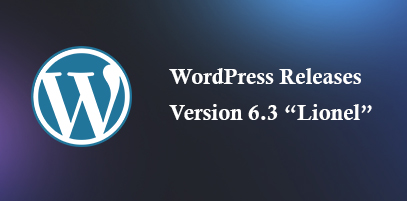PaaS (Platform-as-a-Service)
By :- Ilika - Web Guru Awards Team

Platform as a service (PaaS) could be complete development and preparation surroundings within the cloud, with resources that modify you to deliver everything from straightforward cloud-based apps to stylish, cloud-enabled enterprise applications. you get the resources you would like from a cloud service supplier on a pay-as-you-go basis and access them over a secure net affiliation.
Like IaaS, PaaS includes infrastructure—servers, storage, and networking—but conjointly middleware, development tools, business intelligence (BI) services, direction systems, and a lot of. PaaS is meant to support the entire net application lifecycle: building, testing, deploying, managing, and change.
PaaS permits you to avoid the expense and quality of shopping for and managing code licenses, the underlying application infrastructure and middleware, instrumentation orchestrators like Kubernetes, or the event tools and different resources. You manage the applications and services you develop and therefore the cloud service supplier generally manages everything else.
Platform as a service (PaaS) could be a cloud computing model wherever a third-party supplier delivers hardware and code tools to users over the web. Usually, these tools area units required for application development. A PaaS supplier hosts the hardware and code on its own infrastructure. As a result, PaaS frees developers from having to put in in-house hardware and code to develop or run a brand-new application. PaaS tools tend to be touted as straightforward to use and convenient. Users can unremarkably get to pay on a per-use basis. A corporation could notice the move to a PaaS compelling considering potential value savings over mistreatment on-premises alternatives.
How will PaaS compare to internally hosted development environments?
PaaS is often accessed over any net affiliation, creating it potential to create a complete application during an application. as a result of the event, surroundings aren't hosted domestically, developers will work on the appliance from any place within the world. this allows groups that area unit unfolded across geographic locations to collaborate. It conjointly suggests that developers have less management over the event surroundings, although this comes with so much less overhead.
What is enclosed in PaaS?
The main offerings enclosed by PaaS vendors are:
Development tools
PaaS vendors supply a range of tools that are unit necessary for code development, as well as an ASCII text file editor, a debugger, a compiler, and different essential tools. These tools could also be offered along as a framework. the particular tools offered can rely upon the seller, however, PaaS offerings ought to embody everything a developer has to build their application.
Middleware
Platforms offered as a service typically embody middleware so that developers haven't got to create it themselves. Middleware is code that sits in between user-facing applications and therefore the machine's operating system; for instance, middleware is what permits code to access input from the keyboard and mouse. Middleware is important for running associate degree applications; however, finish users do not act with it.
Operating systems
A PaaS seller can give and maintain the software system that developers work on and therefore the application runs on.
Databases
PaaS suppliers administer and maintain databases. They'll typically give developers a direction system further.
Infrastructure
PaaS is that the next layer up from IaaS within the cloud computing service model, and everything enclosed in IaaS is additionally enclosed in PaaS. A PaaS supplier either manages servers, storage, and physical knowledge centers or purchases them from an associate degree IaaS supplier.
Benefits of PaaS
The most commonly cited advantages of PaaS, compared to associate degree on-premises platform, include:
- Faster time to promote. With PaaS, there’s no ought to purchase and install the hardware and code you employ to create and maintain your application development platform—and no would like for development groups to attend whereas you are doing this. you just faucet into the cloud service provider’s PaaS to start provisioning resources and developing directly.
- Affordable access to a wider type of resources. PaaS platforms generally supply access to a wider vary of decisions up and down the appliance stack— as well as operational systems, middleware, databases, and development tools—than most organizations will much or affordably maintain themselves.
- More freedom to experiment, with less risk. PaaS conjointly enables you to attempt or take a look at new operational systems, languages, and different tools while not having to create substantial investments in them, or within the infrastructure needed to run them.
- Easy, cost-efficient measurability. With associate degree on-premises platform, scaling is often dearly-won, typically wasteful, and typically inadequate: you've got to buy further cipher, storage, and networking capability in anticipation of traffic spikes; a lot of of that capability sits idle throughout low-traffic periods, and none of it are often inflated in time to accommodate unforeseen surges. With PaaS, you'll purchase further capability, and begin mistreating it directly, whenever you would like it.
- Greater flexibility for development groups. PaaS services give a shared code development surroundings that permit development and operations groups to access all or any the tools they have, from any location with a web affiliation.
- Lower prices overall. Clearly, PaaS reduces prices by enabling a corporation to avoid capital instrumentation expense related to building associate degreed scaling an application platform. however, PaaS also can also scale back or eliminate code licensing prices. And by handling patches, updates, and different body tasks, PaaS will scale back your overall application management prices.
PaaS uses
PaaS solutions area unit oftentimes utilized in the event of mobile applications. However, several developers and firms conjointly use PaaS to create cross-platform apps as a result of it provides a versatile associate degreed dynamic answer that has the power to form an application that may be operated on nearly any device.
Another use of PaaS is in DevOps tools. PaaS provides application lifecycle management options further as specific options to suit a company's development methodologies. The model conjointly permits DevOps groups to insert cloud-based continuous integration tools that add updates while not manufacturing period. what is more, firms that follow the falls model will deploy associate degree update mistreatment constant console they use for everyday management?
Recent Topics
-
 WordPress.com Launches 100-Year Web Hosting Plan
WordPress.com Launches 100-Year Web Hosting PlanWordPress, the platform that helps people create websites, now offers something rare. It has taken a bold leap into the future with its 100-year web hosting plan. ...
Read MoreBy :- Laura Davidson
-
 5 Best AI Web Design Tools You Can Try
5 Best AI Web Design Tools You Can TryWhy bother with all the effort of creating websites manually when we have amazing AI tools? In fact, using these tools has become one of the most-practiced ...
Read MoreBy :- Tiana K
-
 Role of Animation and Micro-Interactions in User Experience
Role of Animation and Micro-Interactions in User ExperienceIn today's world, almost every brand wants to create a user-friendly interface for its customers. The main aim behind this is to increase customer base and revenue. Now, when it comes...
Read MoreBy :- Laura Davidson
-
 Web Design Trends to Watch Out for in 2024
Web Design Trends to Watch Out for in 2024Web design is a constant-evolving technology landscape. As a web designer, staying tuned with web design trends and keeping your designs up-to-date is important. These trends will affect ...
Read MoreBy :- Esther McGuinness
-
 The Power of Storytelling in Web Design Engaging Users with a Narrative
The Power of Storytelling in Web Design Engaging Users with a NarrativeStories never fail to engage listeners. That’s why web designers are leveraging the art of storytelling in their designs. In web designing, storytelling goes beyond merely usin...
Read MoreBy :- Navkiran Dhaliwal
-
 WordPress Releases Version 6.3 ?“Lionel”
WordPress Releases Version 6.3 ?“Lionel”WordPress 6.3 “Lionel” is out! Now, you’ll be able to create more beautiful and compelling websi...
Read MoreBy :- Tiana K
